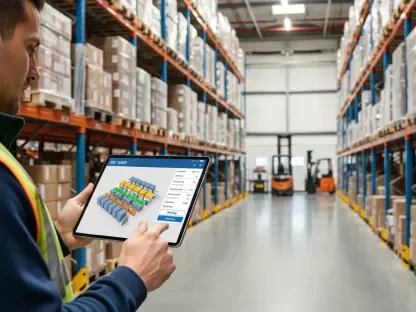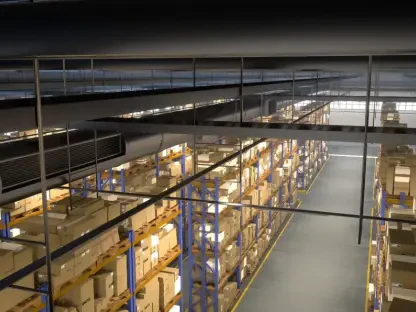Navigating a Pivotal Moment in Global Trade
In an era where geopolitical tensions and economic uncertainties reshape global trade dynamics, the Philippines emerges as a potential contender in the ongoing supply chain realignment. With corporations worldwide adopting diversification strategies to reduce reliance on traditional manufacturing giants, the stakes are high for emerging markets to seize this historic opportunity. This market analysis delves into the Philippines’ readiness to become a key player in this shift, examining industrial competitiveness, strategic advantages, and critical areas for improvement. By dissecting current trends, regional dynamics, and future projections, the aim is to uncover whether the nation can transform its inherent potential into a sustainable competitive edge. The importance of this analysis lies in understanding how the Philippines can position itself amid intensifying regional competition and fluctuating trade policies, offering stakeholders actionable insights for navigating this transformative landscape.
Market Trends and In-Depth Analysis
Global Supply Chain Dynamics: A Shifting Landscape
The global supply chain arena is undergoing a profound transformation, driven by geopolitical instability and the need for risk mitigation. As companies pivot away from over-reliance on single manufacturing hubs through strategies like “China+1+1,” emerging markets in Southeast Asia are under scrutiny for their capacity to fill the gap. The Philippines, while historically overshadowed by neighbors like Vietnam and Thailand, has seen temporary advantages, such as an initial tariff rate of 17% that briefly positioned it as a viable alternative before aligning closer to regional competitors at 19%. This volatility in trade policies underscores a broader trend: the urgency for nations to bolster internal strengths to attract investment. With uncertainty stemming from major economies’ unpredictable economic maneuvers, the window for the Philippines to establish itself as a reliable hub is both narrow and critical.
Cost Challenges and Competitive Barriers
A deeper dive into market data reveals significant hurdles impacting the Philippines’ industrial competitiveness. High operating costs, particularly in electricity, stand out as a major deterrent, with rates 40-50% higher than those in neighboring ASEAN countries, heavily affecting energy-intensive sectors like steel and cement. Labor costs, once a cornerstone of the nation’s appeal, have risen, placing the country in a middling position among ASEAN-5 economies. Structural inefficiencies compound these issues, with bureaucratic delays, slow permit processing, and port congestion inflating logistics expenses and lead times. Without targeted interventions, these barriers risk diverting foreign direct investment toward more cost-effective markets, a trend already evident in the hesitancy of some multinational corporations to commit to long-term projects in the region.
Strategic Advantages Fueling Market Potential
Despite these challenges, the Philippines holds several strategic assets that could propel it into a favorable market position. Its geographic proximity to Taiwan, a mere 141 kilometers away, offers a unique advantage for rapid-response supply chains, particularly in semiconductors, supported by robust air and sea connectivity. Investment incentives from entities like the Philippine Economic Zone Authority (PEZA) have driven a remarkable 59.1% year-on-year surge in approvals, reaching P72.362 billion in recent data. Additionally, the nation’s youthful workforce, with a median age of 26.1 years, combined with high English proficiency and a strong pipeline of STEM graduates, positions it as a talent-rich market. These factors suggest a latent capacity to attract high-value industries if operational inefficiencies can be mitigated.
Regional Hubs as Catalysts for Growth
Zooming into regional dynamics, the Philippines’ industrial landscape shows varied readiness across key hubs, each contributing uniquely to the national market narrative. Pampanga, particularly Metro Clark, is witnessing a surge in warehousing demand, bolstered by top-tier connectivity through Clark International Airport and major highways, alongside a business-friendly environment with minimal red tape. Cebu, a vital industrial center in the Visayas, benefits from strong port infrastructure but struggles with aging facilities and zoning limitations, pushing growth to adjacent areas. Meanwhile, Davao in Mindanao stands as a logistics gateway with modern facilities and competitive lease rates, supported by infrastructure upgrades like the Davao City Bypass Road. These hubs highlight a trend of localized industrial potential, though their success hinges on tailored investments to address specific constraints.
Future Projections: Trends Shaping Supply Chain Diversification
Looking ahead, several transformative trends are poised to shape the trajectory of supply chain diversification, with direct implications for the Philippines. Technological advancements, particularly in automation and digital logistics, are raising the bar for industrial infrastructure, necessitating rapid adoption of smart systems and skilled labor training in advanced manufacturing. Economically, the push for diversified supply chains is expected to intensify over the next few years, potentially peaking by 2027, as companies seek to hedge against geopolitical risks, creating opportunities for high-value sectors like electronics. Regulatory agility within ASEAN could further tilt investment flows, with projections indicating that nations offering streamlined policies will capture a larger share of the market. If aligned with ambitious infrastructure initiatives, such as the P1.507 trillion “Build Better More” program focusing on freight railways and port expansions, the Philippines could secure a lasting foothold in this evolving trade order.
Reflecting on Market Insights and Strategic Pathways
This analysis of the Philippines’ position in the global supply chain shift reveals a complex interplay of challenges and opportunities that shape its market standing. High operating costs and structural inefficiencies emerge as persistent barriers, yet strategic advantages like geographic proximity, fiscal incentives, and a skilled workforce provide a robust foundation for growth. Regional hubs such as Pampanga, Cebu, and Davao demonstrate significant potential to drive industrial expansion, each with distinct strengths that underscore the importance of localized strategies. Moving forward, stakeholders are encouraged to prioritize immediate actions like tariff mitigation through duty drawbacks and electricity subsidies for critical sectors, alongside long-term investments in specialized training and connectivity infrastructure. A focused approach to streamlining regulations via a single-window clearance system also stands out as a vital step to enhance investor confidence. Ultimately, the path to transforming the Philippines from a promising alternative to a primary choice in global trade rests on sustained policy coherence and proactive adaptation to emerging market demands.









